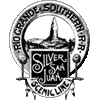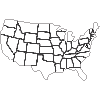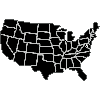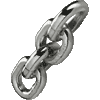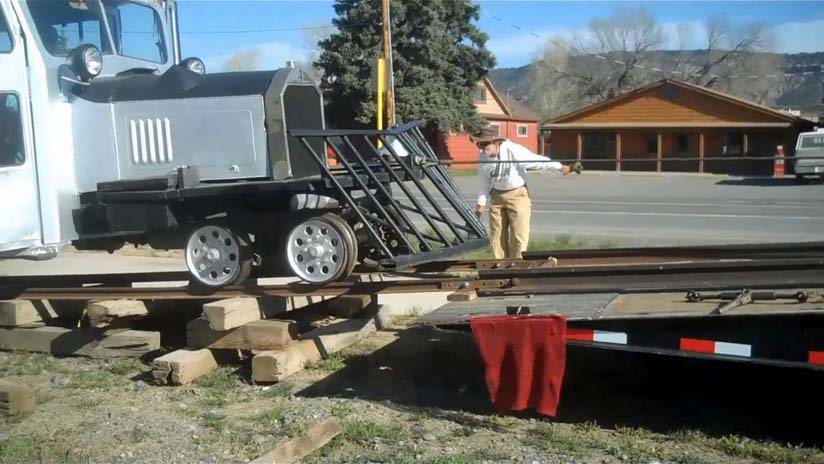
Ridgway Colorado USA - Galloping Goose No. 4 is back in Telluride after undergoing four years of restoration in the capable hands of Ridgway Railroad Museum volunteers.
On 16 May 2013 a major operation loaded the Goose on a flat bed and transported it to its home at the Telluride Volunteer Fire Department.
The operation required that the tracks where the Goose sat at the museum be lifted in a gradual arc to meet the tracks on the end of the flat bed.
Skanska USA, a national construction firm, provided transportation at no cost.
Once the ends of the tracks met, museum volunteers bolted them together so the Goose could be towed seamlessly onto the flat bed.
A tow line from the front of the Skanska semi-truck was pulled back to the Goose and hooked up, and the slow ascent onto the bed commenced.
Charlie Pottberg, a truck driver with Skanska, bolted the Goose on tight and pulled out for Telluride, followed by several of the volunteers.
Museum President Karl Schaeffer oversaw the four-year restoration, with volunteers providing thousands of hours of labor free of charge.
Telluride Fire Department paid for materials and costs.
"We tried to be as accurate as we could to configure it as it was in 1951," museum vice president Jim Pettengill said during the move.
He described the skilled labor involved in the restoration.
A new but historically accurate radiator was fabricated to order in England, and the seats were re-caned in Cortez.
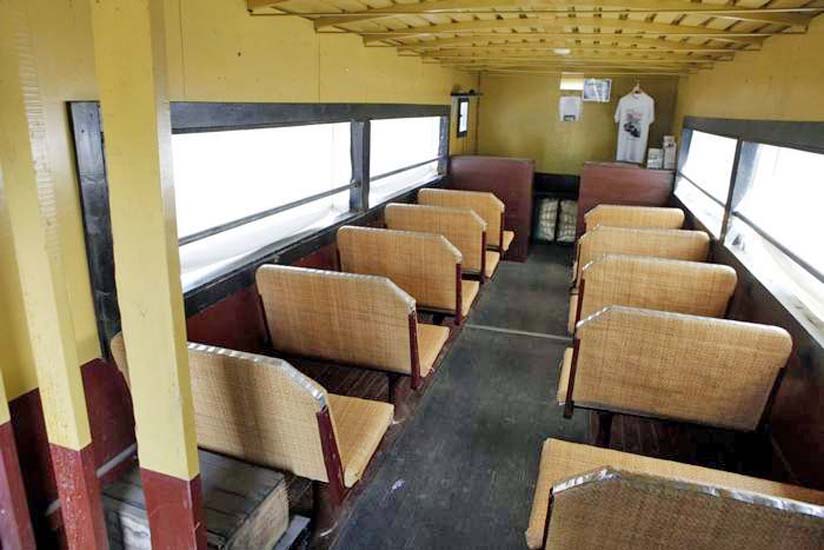
The rear passenger box, Pettengill said, had rotten wood supports.
It had to be disassembled and the frame re-welded.
In replacing the wood supports, real 2 x 4's (not the 1.5 x 3.5's now available) had to be produced, and carpenters skilled in mortise and tenon joints were recruited.
Period pictures guided the crew in fabricating and restoring design elements, such as the rear door.
Galloping Goose Historical Society of Dolores shared expertise gained during its restoration of Galloping Goose 5.
Goose 4 is one of seven rail buses manufactured by the Rio Grande Southern Railroad between 1931 and 1936.
They were a low-cost way for the railroad to fulfill contracts to deliver U.S. mail, instead of using expensive steam engines.
Employees built the buses from automobile motors and spare parts, creating large, ungainly contraptions, that looked like a cross between a locomotive and a pickup truck.
The name "Goose" probably originated from their appearance on the tracks, according to Pettengill, with their loud horns and flapping engine hoods.
RGS ceased operations in 1951.
Geese 2, 6, and 7 are in the Colorado Railroad Museum in Golden.
Goose 3 is at Knott's Berry Farm in California, and Goose 5 is in Dolores.
Goose 1 had been scrapped in 1933, but Schaeffer built an accurate replica in 2000, which is on display at the Ridgway museum.
Beecher Threatt.
provisions in Section 29 of the Canadian
Copyright Modernization Act.

